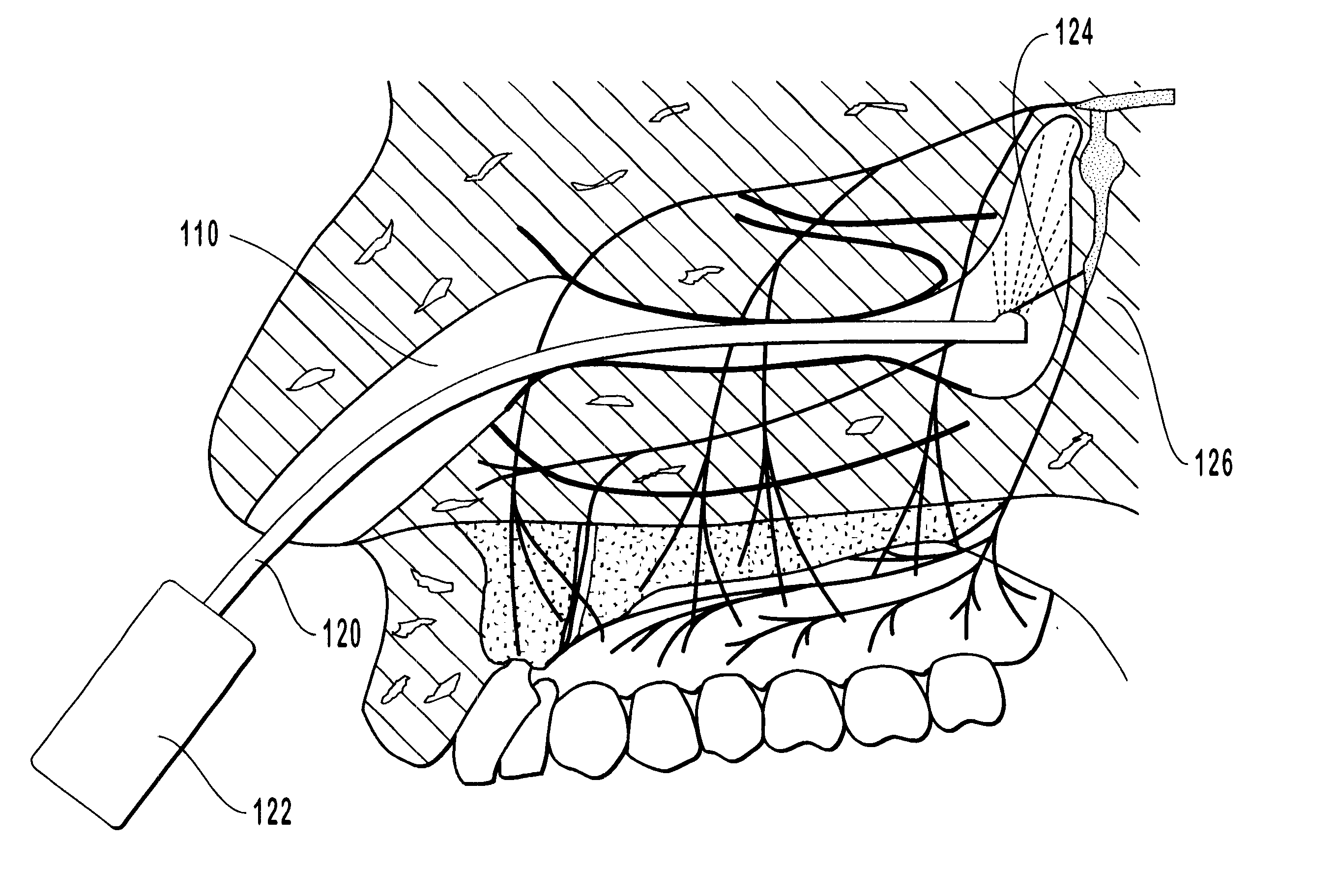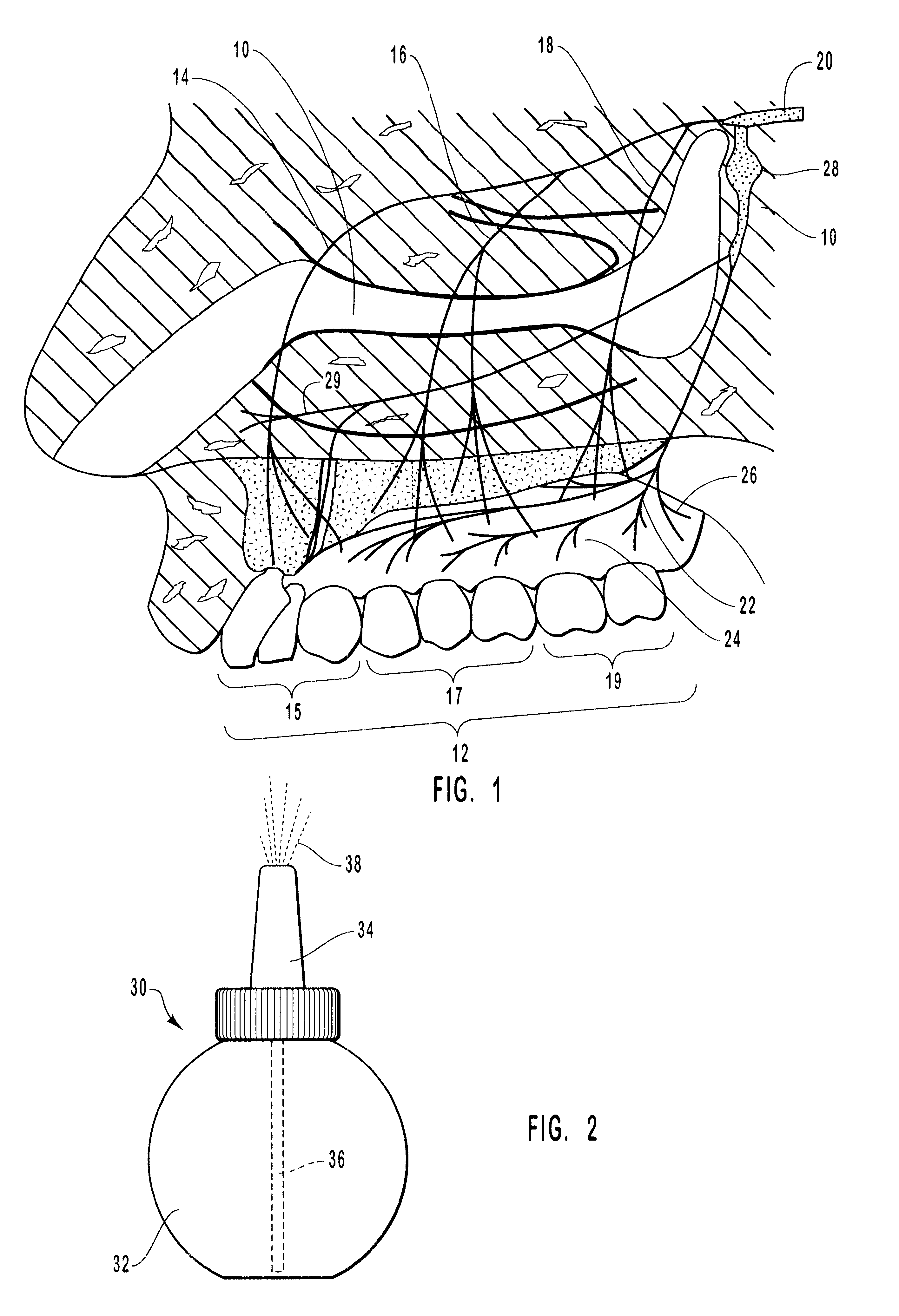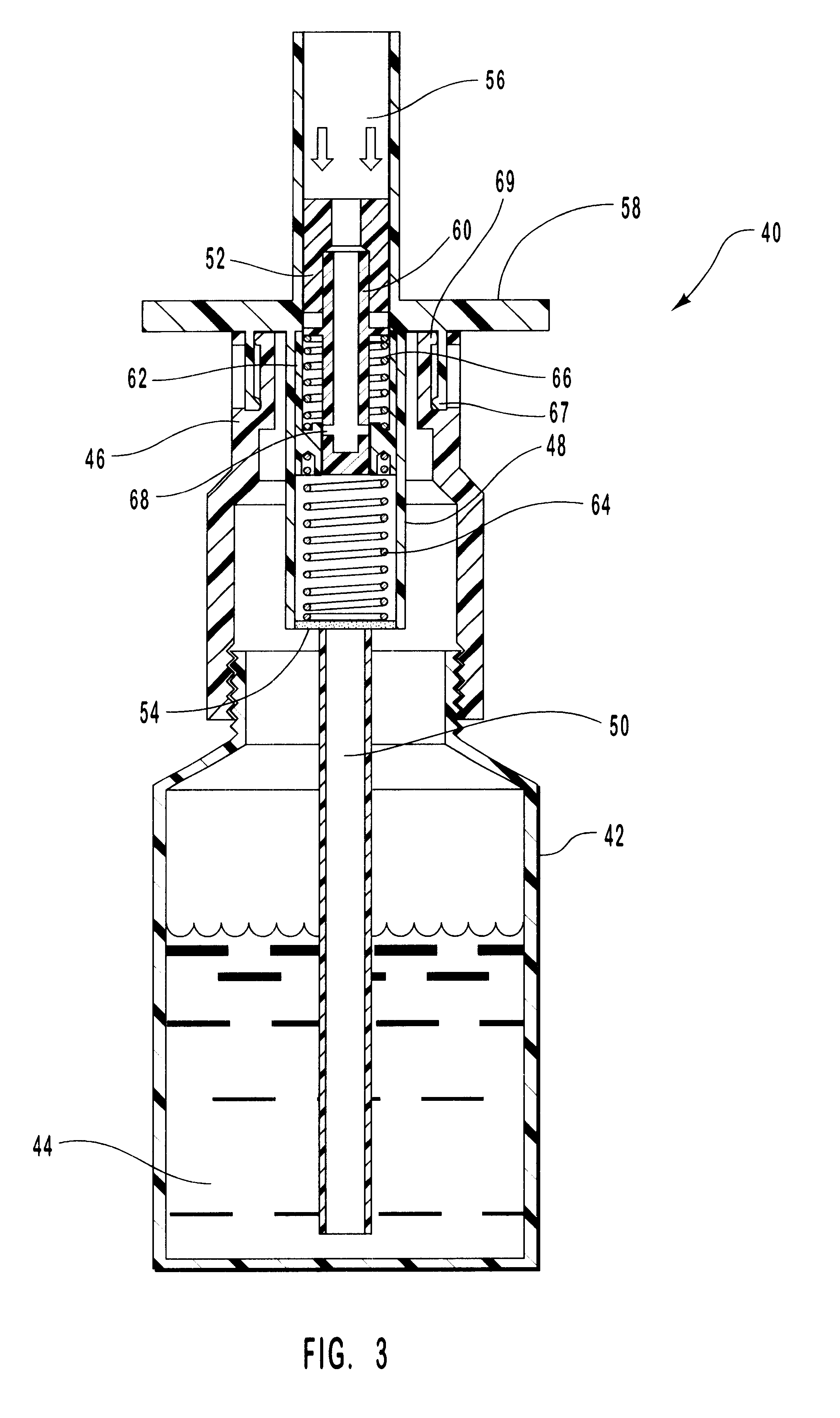Methods and kits for maxillary dental anesthesia by means of a nasal deliverable anesthetic
a technology of oral anesthesia and delivery device, which is applied in the field of oral delivery device delivery device and oral anesthesia delivery device kits, can solve the problems of inability to administer local anaesthesia by needle injection, inability to administer local anaesthesia, and inability to fully recover from surgery, etc., to achieve easy administration, less fear and anxiety, and less pain
- Summary
- Abstract
- Description
- Claims
- Application Information
AI Technical Summary
Benefits of technology
Problems solved by technology
Method used
Image
Examples
example 2
A nasal deliverable anesthetizing composition within the scope of the invention was prepared by combining the following ingredients in the following proportions, expressed in terms of weight percent:
The lidocaine portion included an associated preservative. The aqueous solution included sodium chloride in water. The nasal deliverable anesthetizing composition, when applied to a patient's nasal cavity, was found to provide profound anesthesia of part of all of the maxillary dental arch depending on how much of the composition was applied. The oxymetazoline HCl enhanced the anesthetic effect of the lidocaine compared to a lidocaine composition that was applied to nasal tissue that was not treated with a vasoconstrictor.
example 3
A nasal deliverable anesthetizing composition within the scope of the invention was prepared by combining the following ingredients in the following proportions, expressed in terms of weight percent:
The benzocaine portion included an associated preservative. The aqueous solution included sodium chloride in water. The nasal deliverable anesthetizing composition, when applied to a patient's nasal cavity, was found to provide profound anesthesia of part of all of the maxillary dental arch depending on how much of the composition was applied. The oxymetazoline HCl enhanced the absorption of the benzocaine compared to a benzocaine composition that was applied to nasal tissue that was not treated with a vasoconstrictor.
example 4
A nasal deliverable anesthetizing composition within the scope of the invention was prepared by combining the following ingredients in the following proportions, expressed in terms of weight percent:
The cocaine hydrochloride portion included an associated preservative. The aqueous solution included sodium chloride in water. The nasal deliverable anesthetizing composition, when applied to a patient's nasal cavity, was found to provide profound anesthesia of part of all of the maxillary dental arch depending on how much of the composition was applied.
PUM
| Property | Measurement | Unit |
|---|---|---|
| Fraction | aaaaa | aaaaa |
| Fraction | aaaaa | aaaaa |
| Fraction | aaaaa | aaaaa |
Abstract
Description
Claims
Application Information
 Login to View More
Login to View More - R&D
- Intellectual Property
- Life Sciences
- Materials
- Tech Scout
- Unparalleled Data Quality
- Higher Quality Content
- 60% Fewer Hallucinations
Browse by: Latest US Patents, China's latest patents, Technical Efficacy Thesaurus, Application Domain, Technology Topic, Popular Technical Reports.
© 2025 PatSnap. All rights reserved.Legal|Privacy policy|Modern Slavery Act Transparency Statement|Sitemap|About US| Contact US: help@patsnap.com



